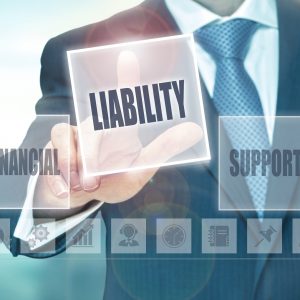
Despite accounting for 19% of revenues among firms in the United States, small businesses shoulder more than 53% of all commercial tort liability costs, according to a new report by the U.S. Chamber Institute for Legal Reform.
The story is worse for the business with less than $1 million in revenue. They account for only 7% of all revenues and yet bear 39% of the tort liability costs, according to the 2020 “Tort Liability Costs for Small Businesses” report.
While those numbers are staggering, you may be shocked to know that only 40% of those of small firms’ $182 billion in tort liabilities were covered by insurance.
In 2018, the study found that small businesses’ total tort liability in 2018 was $182 billion, of which only 40% was covered by insurance. That means that those small businesses paid an aggregate $109 billion out of pocket for those liabilities.
The lesson from the study: not carrying enough liability coverage in your policies can result in significant out-of-pocket costs that can cripple your small business if you are sued.
The big liabilities
A tort is a civil wrong that causes harm to a third party. Typically, businesses are sued by third parties who allege they were harmed by a business or an employee, manager or owner. Businesses are vicariously liable for torts committed by individuals acting on their behalf.
Actions can include lawsuits alleging:
- Negligence
- Intentional wrongdoing
- Liability for harm caused by a product or a company’s policies or employees.
The majority (81%) of the commercial tort payouts in 2020 related to operating and professional liability, while 13% was related to commercial auto liability. The rest was for medical malpractice.
How to protect your firm
Your business can protect itself against claims based on negligence, strict liability and some intentional torts by purchasing a general liability policy.
Besides purchasing a stand-alone policy, small firms can buy a business owner’s policy, which combines property and liability insurance into one policy.
General liability policies and BOPs cover:
- Claims for bodily injury or property damage caused by negligence on the part of your company or representatives. The injury or damage may occur on your premises or at a job site, or arise out of your products or completed work.
- Claims arising from your products or completed work, regardless of whether they are based on negligence or strict liability.
- Claims alleging personal and advertising injury.
Commercial auto policies are also an important part of the equation if you have driving employees. Commercial auto liability claims account for 13% of all business tort liability, as mentioned above.
Also, you may want to consider an umbrella or excess liability coverage that adds a second layer of protection to avoid paying out of pocket if you are saddled with a large claim that busts through your policy limits.
Be warned: General liability policies do not cover medical malpractice, workplace torts or financial losses that are the result of professional mistakes.
To cover workplace-related lawsuits (claims of discrimination, harassment or wage and hour infractions) you’ll need employment practices liability coverage. And for professional liability, you may need either errors and omissions liability insurance or professional liability coverage.
To ensure you don’t end up holding the bag, ensure you have proper liability coverage in the event your company is sued. Call us if you’d like to go through your current policies so we can evaluate your current risk exposure.


